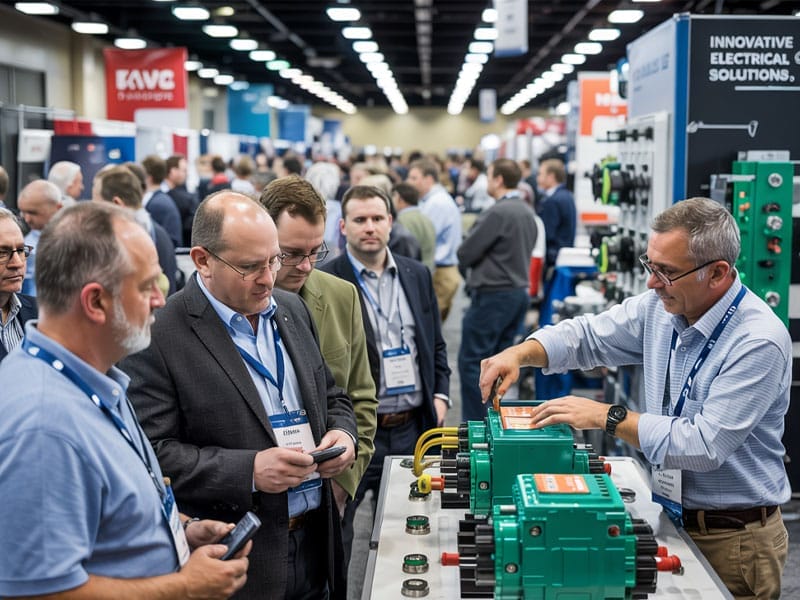
2025 Electrical Industry Trends: What Midwest Contractors Need To Know
As an electrical contractor, you must keep up with quick changes in the electrical industry.
Smart systems and solar panels are important for 2025.
This short guide will show you how to manage these changes and find new opportunities.
Key Takeaways
- By 2025, smart buildings and cities will require electrical contractors to work more with smart systems and solar energy.
- To stay competitive, contractors must learn about AI, machine learning, drones, and digital twins. These technologies make projects quicker and less expensive.
- Interest in renewable energy is rising. Solar and wind power projects are becoming more common in the Midwest, opening new job opportunities for contractors.
- Future workers must understand new tech. Training should cover smart construction, renewable energy sources, and efficient management of projects.
- Government policies and funding affect the industry. Tariffs or federal spending can change business costs.
Key Electrical Industry Trends for 2025
By 2025, smart buildings and cities will transform your living spaces.
Project management software will streamline tasks for electrical contractors.
Growth of Smart Buildings and Cities
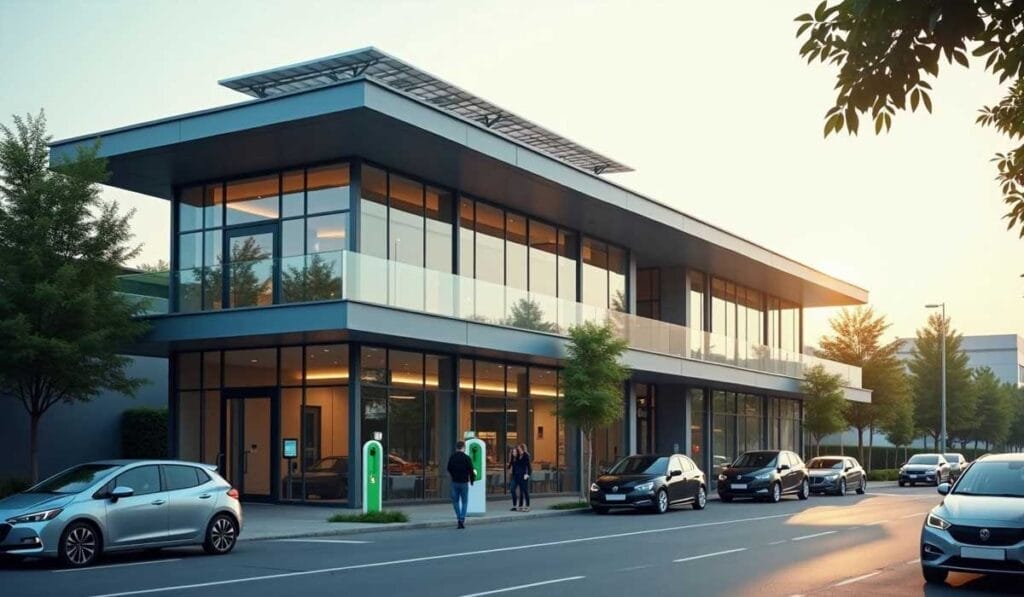
Smart buildings are transforming how energy is used and operations are managed.
These structures employ technology to reduce energy needs and streamline processes.
They connect to smart grids, allowing for efficient power sharing across cities.
For example, a building can adjust lighting and heating based on occupancy, while streetlights may dim automatically to conserve electricity.
Electric vehicle (EV) charging stations are becoming more common in cities, promoting the use of electric cars over traditional ones.
This shift presents significant opportunities for electrical contractors in states like Indiana, Kentucky, or Illinois.
You play a crucial role in developing these smart environments – from installing energy-efficient technologies in homes to connecting large solar panels that supply power to entire neighborhoods.
Data centers are also on the rise, requiring considerable but intelligent energy consumption.
As an electrical contractor, you are responsible for supplying the necessary power solutions for these critical facilities.
Increased Use of Prefabrication

Prefabrication is changing the construction and electrical industry.
It makes work easier and reduces costs.
Prefab parts come ready to assemble on-site, saving time.
The rise of smart homes and EV chargers increases the demand for these components.
Working with manufacturers skilled in prefabrication can distinguish your business.
This approach speeds up solar energy projects and battery storage system installations, benefiting time and budget.
People in the Midwest must adopt prefabrication quickly to stay competitive by 2025.
Embracing prefabrication will improve performance in commercial construction, residential construction, and renewable energy sectors.
Adoption of SaaS Solutions for Project Management

Projects today are more complex.
Contractors use SaaS platforms for project management.
These platforms simplify managing schedules, budgets, and teams.
SaaS systems are becoming essential.
They help with renewable energy projects and EV infrastructure expansions.
These tools assist in coordinating solar farms and installing charging stations.
Consider switching to a SaaS platform if you still use paper or spreadsheets.
This change can make project management easier.
Expansion of Renewable Energy Projects
The Midwest will see a rise in renewable energy projects by 2025.
Investment in solar and wind sources is increasing.
This effort aims to reduce carbon footprints, benefiting the Earth.
As an electrician in Indiana, Kentucky, or Central/Southern Illinois, prepare for more jobs with solar panels and wind turbines.
Green power generation benefits both the planet and business.
With federal investments boosting infrastructure and supporting renewable sources, now is the time to enhance your green building and energy storage systems skills.
Emphasis on Energy Efficiency and Sustainability
Customers today expect structures that are both awe-inspiring and environmentally conscious.
This shift to eco-aware building includes using solar panels, wind energy, and intelligent systems to reduce energy wastage in data repositories and commercial areas throughout Indiana, Kentucky, and Central/Southern Illinois.
Your equipment requires upgrades, and digital planning methods such as virtual duplicates and artificial intelligence are needed for economical, eco-friendly project oversight.
Electric vehicle (EV) charger stations are emerging as a necessary project element.
They contribute to environmental preservation and present fresh business prospects.
Adjusting to these modifications implies making choices that will have positive effects on you over time while addressing clients’ forthcoming requirements.
Technological Innovations Shaping the Industry

Tech is transforming how we build.
Smart technology helps plan and construct advanced buildings, predicting challenges before they arise.
AI and Machine Learning in Electrical Construction
AI and machine learning are changing how you work in electrical construction.
These technologies speed up your projects, reduce costs, and improve quality by simplifying the design of complex systems.
AI predicts potential problems by analyzing past data. This helps you avoid issues before they happen.
Machine learning optimizes resource use over time, leading to fewer delays and more accurate project schedules across residential and commercial construction.
Integrating AI into electrical contracting is becoming necessary to stay competitive.
It plays a key role in various tasks from managing power grids to installing solar energy systems, ensuring every job runs smoothly without any problems.
Advanced Automation and Robotics
In Indiana, Kentucky, and Central/Southern Illinois, robots and smart systems help you work faster and more accurately.
These tools allow for efficient work without mistakes or redoing tasks.
Now, robots can pull cables and install solar panels. This saves time on large projects.
Drones inspect hard-to-reach areas safely, avoiding dangerous climbs.
Software predicts issues before they occur, making project management smoother.
These advancements make your job safer and help meet deadlines efficiently.
Use of Digital Twins for Project Planning
Digital twins transform how you handle electrical projects. Before starting, these simulations let you test and refine projects like smart cities or renewable energy systems. They save time and money by eliminating the need for real-world trials.
Digital twins make planning efficient, help with resource management, and keep projects within budget and on time. For success in the Midwest market by 2025, using digital twins is essential for better project outcomes today.
Workforce Dynamics in 2025

In 2025, the job market changes as older electricians retire and younger, tech-savvy workers join.
Companies must train experienced staff on new technologies while welcoming newcomers.
Shifting Workforce Demographics
Electrical jobs attract more young people and women, bringing new ideas to Indiana, Kentucky, and Central/Southern Illinois.
This change requires updated training methods.
Focus on solar energy, green energy, smart buildings, AI, machine learning, and IoT.
Young employees value sustainability and efficiency in their work.
Highlight how your projects contribute to clean energy to attract skilled workers.
Addressing the Skilled Labor Shortage
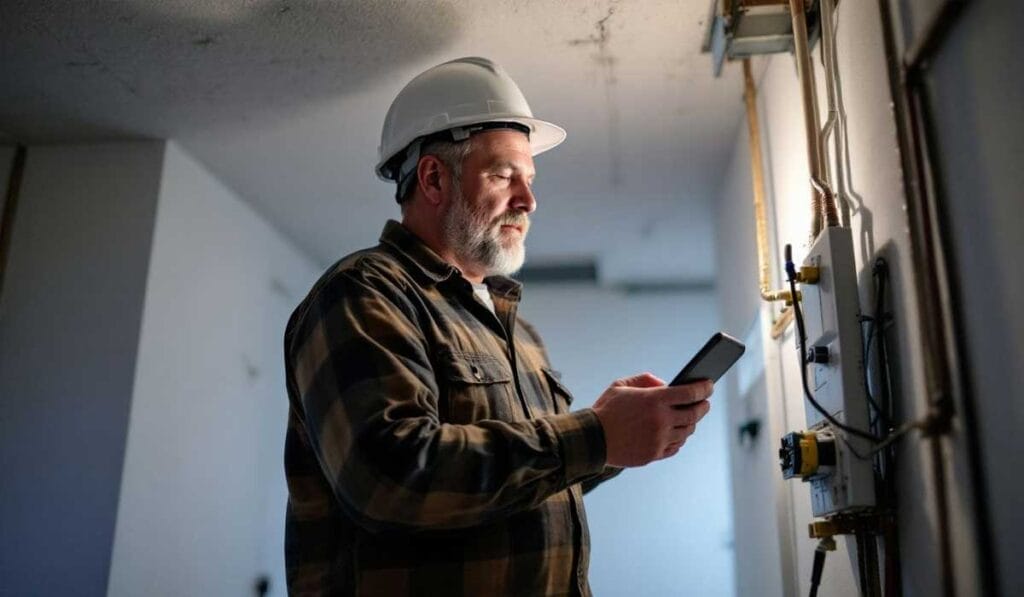
The electrical industry faces a worker shortage.
This issue makes staying competitive hard.
Upskilling current employees is essential.
Teach them about renewables and electric vehicle charging to improve your business.
Attract new talent by partnering with schools and offering internships.
Highlighting the importance of this field can inspire more people to join, strengthening your company and the Midwest’s industry.
Training and Upskilling for Emerging Technologies
Advance your knowledge by immersing yourself in the latest technology, which is essential for electrical contractors in Indiana, Kentucky, and Central/Southern Illinois.
- Develop expertise in smart system installation for homes and offices. As structures become more sophisticated, this talent is extensively sought after.
- Equip yourself with solar energy panel installation skills. Eco-friendly solutions are becoming popular in the construction industry, making you stand out.
- Get proficient in installing EV charging stations. The demand for charging solutions increases as EV sales surge.
- Employ cloud-based tools for effective project management. Transition from manual tracking approaches such as spreadsheets.
- Comprehend building information modeling (BIM). It forecasts project requirements precisely, conserving resources and funds.
- Enhance your abilities to manage workforce changes. Fill the void between retiring workers and the new generation.
- Discover specialized programs for electric vehicle infrastructure development. State and federal incentives are boosting job opportunities.
Spending on technology education prepares your business for upcoming trends and communicates to clients your dedication to superior service with progressive solutions.
Economic and Regulatory Factors
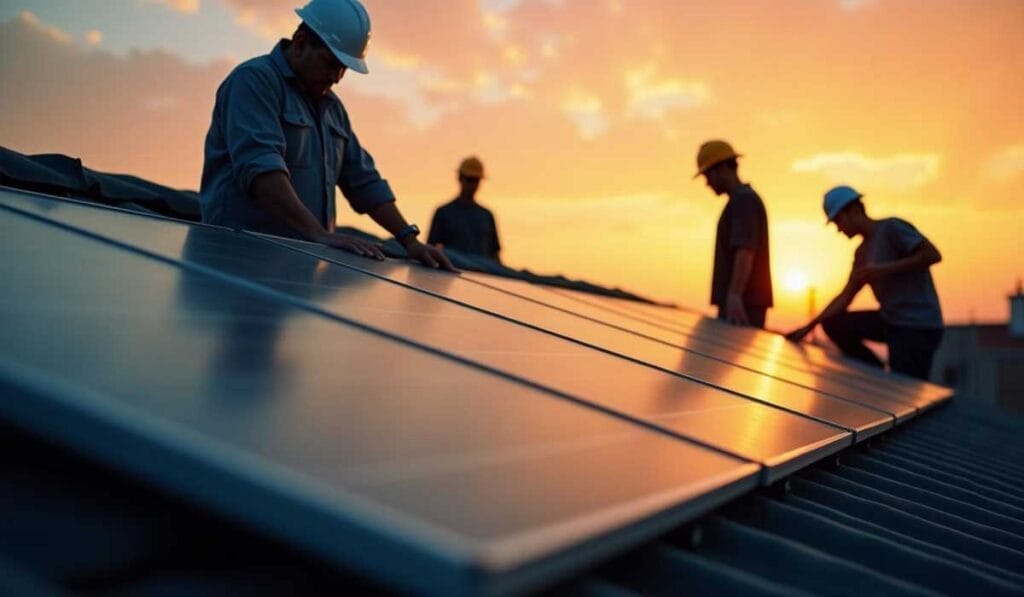
Tariffs impact material costs in the electrical industry, and government funds boost infrastructure and green energy projects.
Watch these factors closely as they can significantly affect your work.
Impact of Tariffs on Material Costs
Tariffs raise the cost of wires, panels, and tools you use for electrical industry projects.
For example, a box of cables that used to cost $100 might now be $120 or more because of tariffs.
This increase affects your budget and can disrupt project plans.
The rise in prices also impacts smart systems and renewable energy components like solar energy parts, making them more expensive.
You need to constantly monitor tariff changes to avoid unexpected costs and manage your budget effectively.
Federal Investments in Infrastructure Projects
The government is investing in smart systems and renewable energy projects.
As an electrical contractor in the Midwest, you’ll find opportunities.
You might work on setting up electric vehicle charging stations or upgrading electrical grids for green energy.
Staying informed is key. Look out for federal investments in solar power plants in Indiana or wind farms in Illinois.
This knowledge can position you as a leader in building cities powered by smart technology and renewable energy sources.
Renewable Energy Incentives
Renewable energy incentives can lower your costs and make you more competitive.
Federal investments and solar energy projects offer benefits.
Small modular reactors are also included in these incentives.
Working with local governments and utility companies gives access to grants, tax breaks, and other financial advantages.
This support can reduce your expenses now and lead to savings in the future.
Explore what’s available in Indiana, Kentucky, or Central/Southern Illinois for renewable energy incentives.
These opportunities can significantly impact your project’s budget.
Strategies for Midwest Electrical Contractors
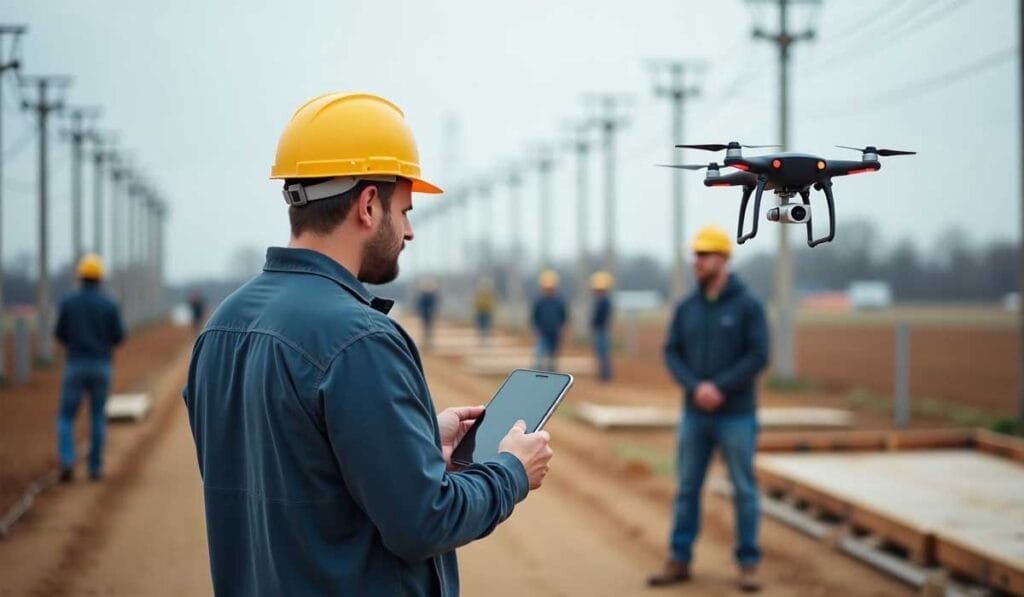
If you’re a real contractor in the Midwest in 2025, stay ahead by using drones for site surveys and cloud-based project management systems.
This approach keeps you at the forefront of construction technology trends.
Leveraging Local Market Opportunities
You’re Midwest, central to America’s electrical industry.
Here, strategic decisions can convert local tendencies into significant benefits for your business.
- Initiate by leveraging the expansion of electric vehicle (EV) infrastructure. Places in Indiana, Kentucky, and Illinois are amplifying their EV charging stations. Stay ahead by offering your services for these initiatives.
- Afterwards, concentrate on intelligent buildings and cities. They require contractors who comprehend the unification of Internet of Things (IoT) devices. This is your opportunity to excel in connecting buildings to the internet.
- Do not neglect the solar energy farms and renewable projects emerging across the Midwest. These ventures are beneficial for the environment and your business.
- Engage with prefabrication and modular construction methods. They conserve time and funds. Reveal to potential clients how you can make their projects more economical.
- Monitor federal investments in infrastructure projects under the Biden-Harris administration. New roads, bridges, and public buildings indicate new prospects for progressive contractors.
- Apply software-as-a-service (SaaS) solutions to manage your projects more efficiently. Showing clients your proficiency with technology might secure you contracts.
- Associate with local utility companies engaged in renewable energy incentives and power grid improvements. These alliances can lead to continuous work.
- Renewable energy incentives are transforming into tangible projects requiring skilled contractors. Be prepared to seize these opportunities as they come.
Each of these steps gives access to new markets and chances to surpass the competition.
Remain vigilant, stay knowledgeable, and, above all, be willing to adjust to the rapidly progressing environment.
Building Partnerships with Suppliers and Manufacturers
Partnering with suppliers and manufacturers puts the latest tools and technology in your hands.
This keeps your projects modern.
- Working closely with manufacturers means you can install smart systems in Indiana homes before others.
- Good relationships with suppliers ensure quick access to solar energy equipment, speeding up installations in Kentucky.
- Sharing knowledge with partners alerts you to construction industry changes ahead of competition.
- Networking offers special safety gear and tech deals, like an electrical construction market VIP.
- Collaborating creates custom solutions for both residential and commercial projects, improving outcomes.
- Learning from suppliers about material efficiency reduces costs, enhancing profit margins.
- Partners streamline supply chains for the timely availability of materials, minimizing delays in Central/Southern Illinois.
- Early info on new products helps confidently plan future work, staying ahead in the electrical industry.
- Suppliers’ sessions keep your team updated on new technologies affordably.
This strategy ensures your business remains at the forefront of innovation and efficiency into 2025.
Staying Competitive with Emerging Technologies
Stay updated with technological advancements to pioneer in your field. Intelligent systems are increasingly vital in the Midwest, improving buildings and urban environments.
Implementing intelligent technologies, such as IoT devices and power over Ethernet solutions, can provide a competitive advantage.
Explore the realm of renewable energy and EV charging stations as well.
The need for solar energy initiatives and EV charging spots is growing with the rise in electric vehicle ownership.
Such a change will bring about considerable effects on workforce dynamics by 2025.
Conclusion
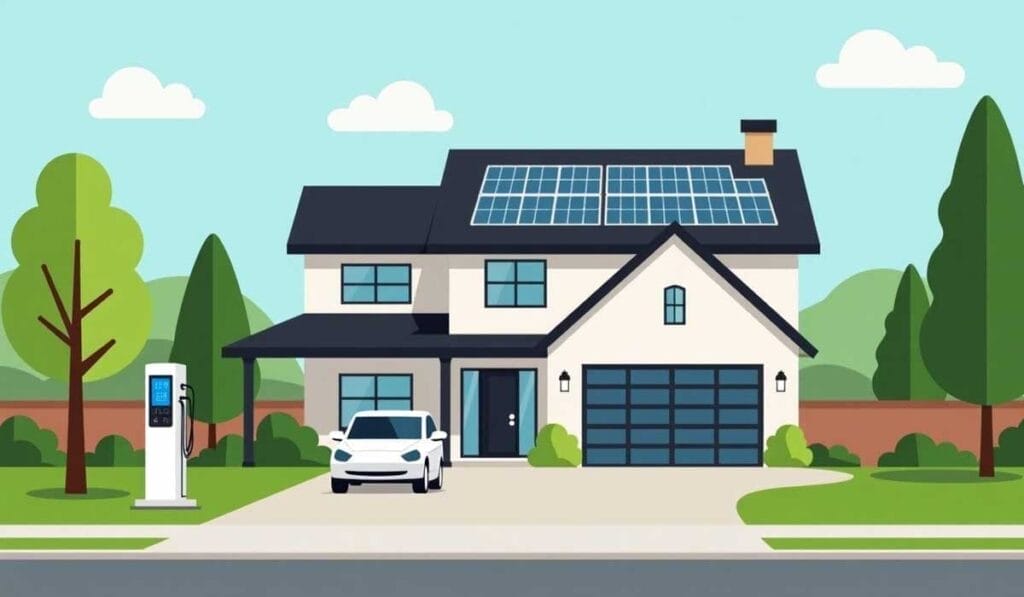
Get ready for 2025. Smart homes and cleaner energy are becoming more common.
You’ll work with those who control themselves and install solar panels to clean our air.
Electric cars are also important—they need charging stations, and you might set those up.
Learn new skills and collaborate with experts in different fields.
The future is here; be prepared to meet it.
FAQs
1. What trends should electrical contractors in the Midwest be aware of for 2025?
Electrical contractors should monitor various trends, including a rise in modular construction and solar energy use, changes to interest rates by the Fed, and fluctuations in residential and commercial construction projects.
2. How will the Federal Reserve rate cuts impact the electrical industry?
Federal Reserve rate cuts could potentially lower borrowing costs for general contractors. This may lead to increased non-residential construction projects, benefiting those working within the electrical construction market.
3. Can you tell me more about how data centers influence the electrical industry?
Data centers require many power generators and efficient cooling systems, resulting in increased demand for skilled electricians who can navigate complex infrastructures while adhering to National Electrical Code standards.
4. What role does Building Information Modeling (BIM) play in project management within the electrical industry?
Building Information Modeling (BIM) is pivotal as it allows architects, engineers, and other professionals involved with building permits to visualize a project before it’s built, which helps prevent errors during actual construction phases.
5. Is there any government initiative that could influence future trends within this sector?
Yes! Incentives from the Biden Administration or legislation like the Chips and Science Act might boost the transition towards renewable energy sources such as small modular reactors (SMRs), decentralized energy systems, or nuclear plants!
6. Are there specific safety measures that need consideration due to these upcoming trends?
Absolutely! With new technologies come new safety considerations—everything from using proper safety equipment when installing prefabbed components or charging infrastructure for electric vehicles to ensuring compliance with LEED certifications for energy-efficient buildings.
